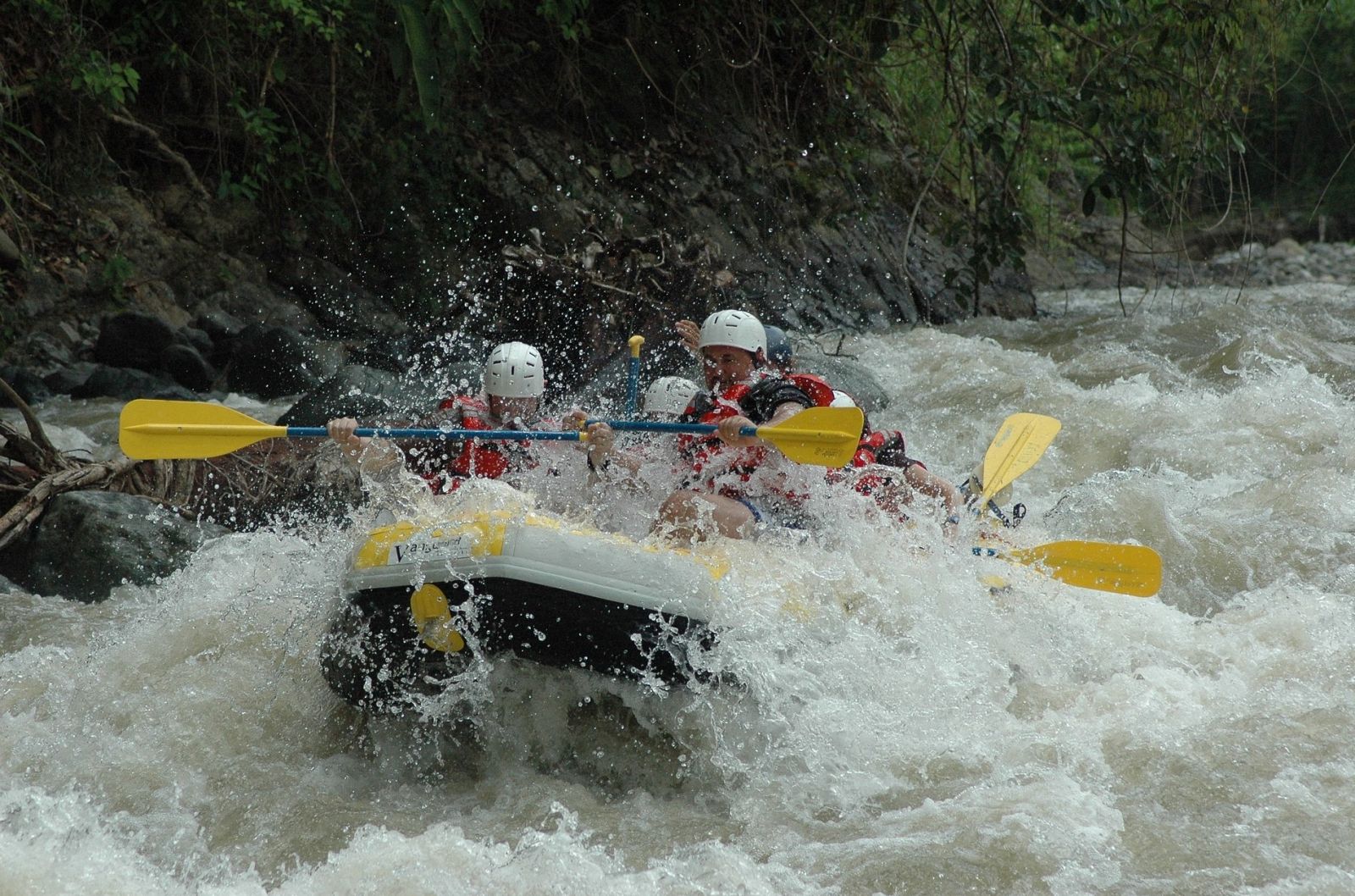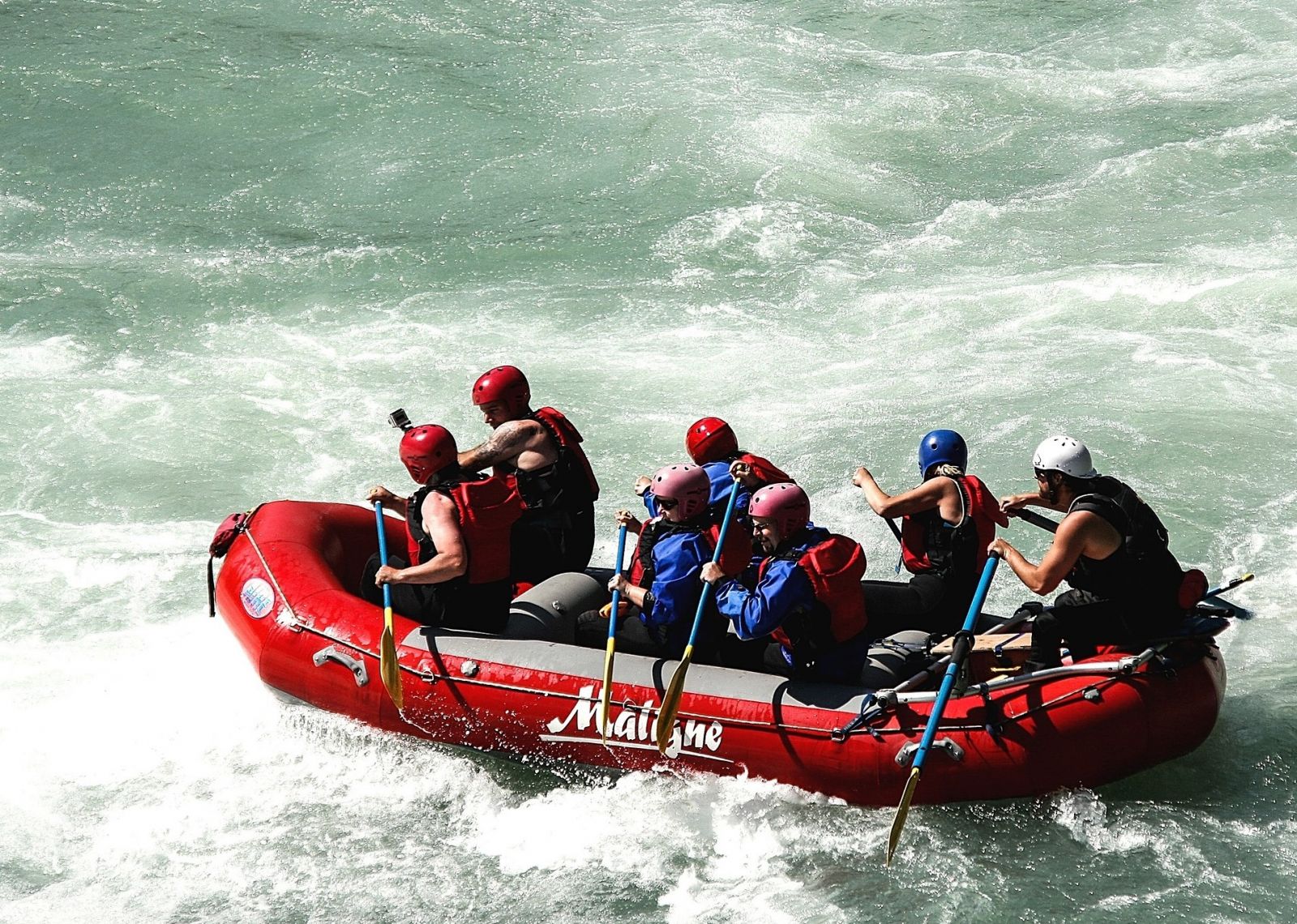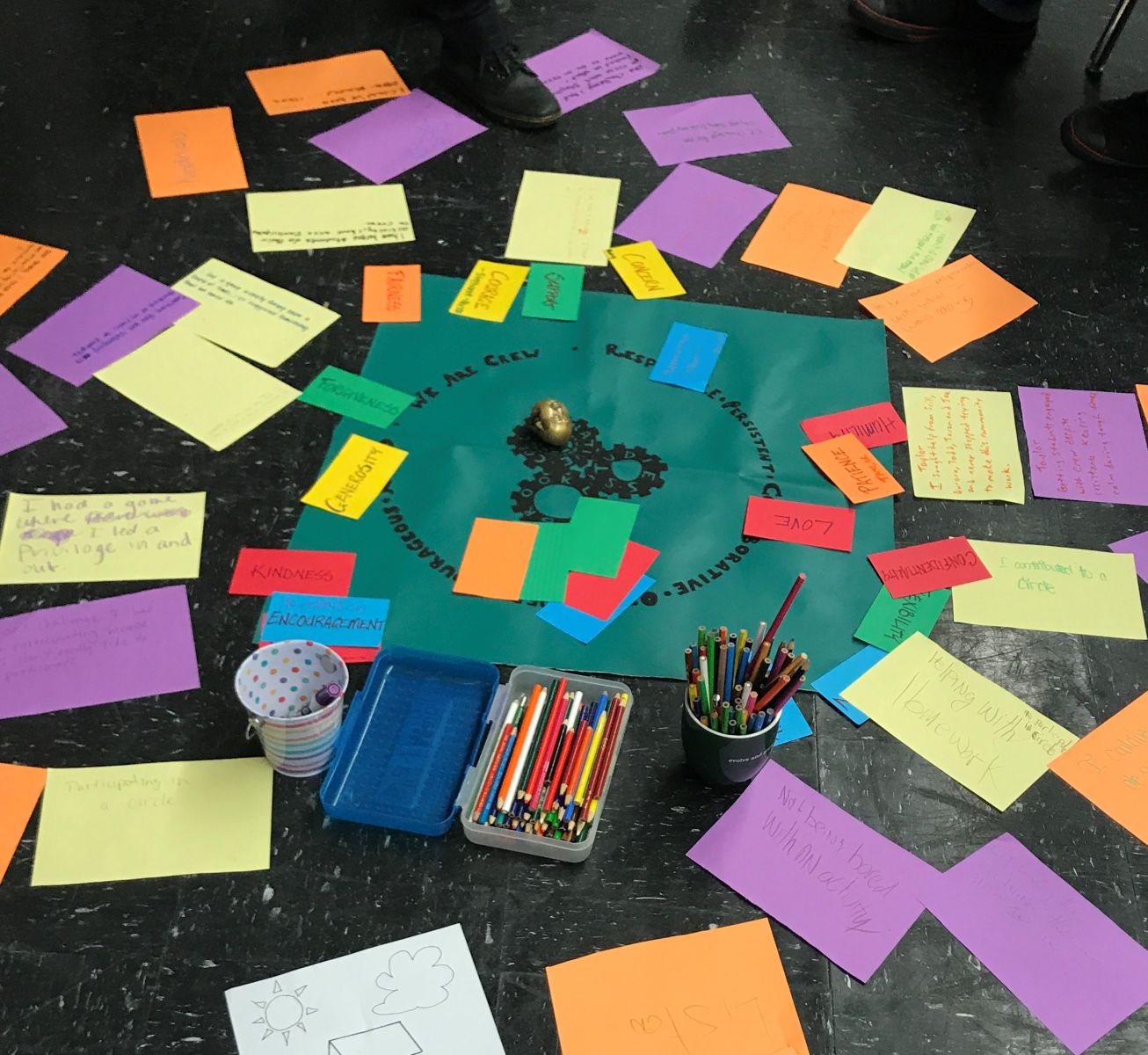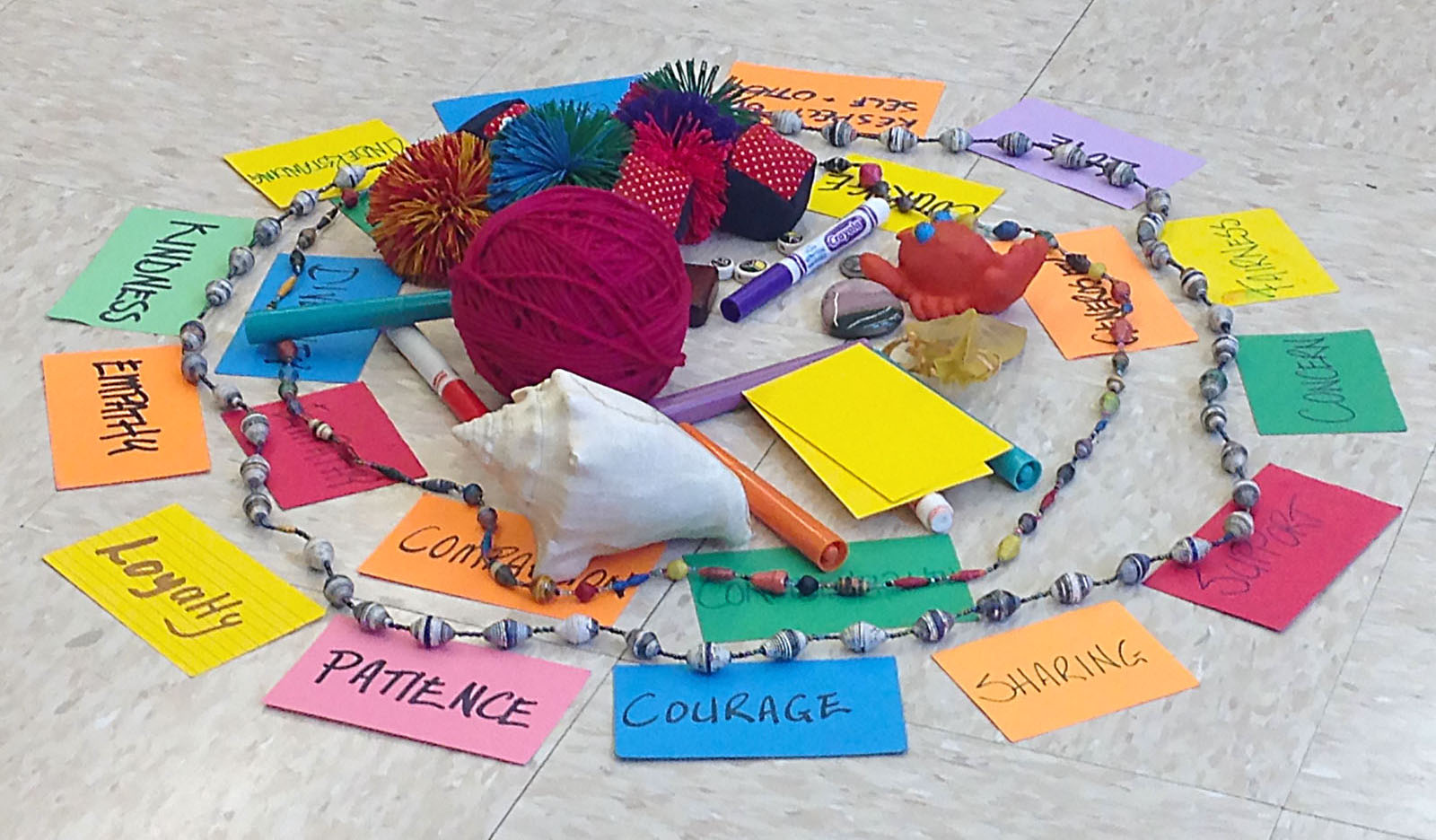The activities below are geared to a restorative circle process, but can easily be adjusted to fit different class and advisory formats. Just take the essence of the circles and adapt it to fit how you work with your students.
For more information about restorative circles, see our introduction to circles on TeachableMoment.
Opening Ceremony:
Mindfulness Moment
Introduce a mindful breathing activity to center students and transition them into the circle space. Read the following meditation out loud ... slowly ... pausing at the end of each line ...
- Get comfortable in your seat.
- Sit up straight.
- Put both feet down, soles connecting to the floor.
- Rest your hands in your lap.
- If comfortable for you, close your eyes, or, if you prefer, find a spot on the floor in front of you to gently rest your gaze.
- Sit strong like a mountain, tall like a large tree.
- Image there’s an invisible thread attached to the top of your head, gently pulling you up, stretching you out.
- Allow your shoulders to drop.
- Take a few moments to notice how your body feels.
- Check in with yourself as you bring your attention to your breath.
- Notice how the breath flows ... in ... and out ...
- There’s no need to change how you breathe.
- Your body is the expert. It knows just how. It needs no guidance.
- Simply notice each breath coming into the body with the in–breath, and leaving the body with the out–breath.
- If you notice your mind is caught up in thoughts or concerns, body sensations or emotions, know that this is normal.
- If your attention wanders, as it will, just notice it then return the focus again to your breathing.
- Notice the stray thoughts and feelings, but don’t dwell on them.
- Simply allow them to pass as you keep coming back to your breath.
- Your breath, which continues to flow ... deeply ... calmly ... continuously
- Feel your chest and stomach gently rise and fall with each breath.
- Take a few more moments to notice how your body feels.
- Keeping your eyes closed, notice the sounds around you.
- Feel the floor beneath you.
- Start to wiggle your toes.
- Loosen your head by shaking it slightly.
- Shrug your shoulders.
- Bring your attention back to your surroundings.
- Open your eyes and get adjusted to the light.
- Straighten out your legs, and stretch your arms and legs gently as you come back into the room.
- Check in with yourself.
- How are you feeling?
Send a talking piece around inviting students to share what that was like for them. How are they feeling right now?
Note to the Teacher:
If you are not comfortable talking students through a meditation yourself, there are several online audio sources you can turn to. The Mindfulness Without Borders website has a series of short audio clips to use at the start of a circle or class, in both English and Spanish.
Snowflake Activity on Communication
Hand out 8.5 x 11 sheets of paper. Explain that you’ll start today’s circle with an activity. Either invite students to close their eyes or turn their chairs so they’ll sit with their backs to the center. Ask them not to look at what the person to either side of them is doing with the paper as you start the activity. Let them know that this activity will be done in silence (no questions!).
Invite them to follow the following directions:
- Fold the paper in half
- Fold it in half again
- Rip a piece off the top right hand corner
- Rotate the paper 180 degrees
- Fold the paper in half again
- Rip a piece from the top left hand corner
Invite students to either open their eyes or turn their chairs around to face the center piece again. Have students unfold their paper and look around the room at the snowflakes that were created. You’ll note the variety of shapes that were created despite the exact same directions.
Send a talking piece around inviting students to respond to some or all of the following prompts:
- What do you notice about the snowflakes we created?
- Why do you think this is?
- How does this relate to our work together in crew/advisory/class this year?
Option 1:
We Are Crew Not Passengers
For this circle, add to the center piece images of a boat in rough weather (water) and/or a boat in more quiet water (fair weather) depending on what you think best represents your work together as a class, advisory or crew this year. Some images to consider:


Invite students to look at the boat image or images in the center piece as they think about their work in class, advisory or crew this year. If needed they can get out of their seats to quietly look at the image(s).
Circle prompts could be:
- How does this image represent our advisory/class this year?
- Who/where are you in this image? What role do you tend to play?
- How do you impact others in our group?
- What role would you like to play? How might that impact our advisory/class?
Alternative approach: Share with students a collection of images, both abstract and concrete. Ask each student to choose one image to illustrate their answer as you ask questions about the advisory/class, the power of community, people’s role in the group, individual power, empowerment, shared power, etc.
Option 2:
Values Go Rounds
If they are not part of your center piece already, add values cards:
Take a set of color index cards, post its, or pieces of paper or cardboard, and write different values on them. Values to consider are: support, caring, teamwork, flexibility, patience, creativity, empathy, caring, concern, generosity, respect, integrity, authenticity, collaboration, kindness, compassion, fairness, equity, open mindedness, honesty, etc.
Below are some images that show how to have values be a part of your center piece. Make sure to always have empty cards and markers available, in case students want to add values.


Invite students to look at the values in the center piece as they think about the work they did in class, crew, or advisory this year. If needed they can get out of their seats to quietly read the different values at the center of their circle.
For older students an alternative strategy for creating values cards is to hand out blank index cards and have each student write their own values in response to each of the prompts below. Invite them to contribute their value to the center piece after sharing the reason they picked that particular value.
For the first go round, ask students to think back over the school year and pick a value that for them captures their crew, advisory or class. Send the talking piece around, asking students to share the value and why this value for them captures their advisory or class this year.
Send the talking piece around again, inviting students to pick a value that they think has been challenging for them as an advisory or class this year.
Send the talking piece around one final time, asking students to pick a value that they’d like to commit to in the new year, to improve how they’ll show up in advisory or class.
Closing Ceremony:
Connections
Explain that "connections" is a time to offer reflections or feelings about the work we’ve done together today. It’s an opportunity to share briefly what’s on your mind or in your heart (if you feel so moved).
Ask if students are familiar with the Quakers, also known as the Friends?
"Connections" comes from the Quaker tradition. People speak if they feel moved to speak. It’s not a discussion or go–round. If there is silence, that’s fine. Enjoy the silence as a time for reflection.
Set your timer for three or four minutes and let the reflections unfold. When the timer goes off, it’s over. There’s no need for follow–up discussion.